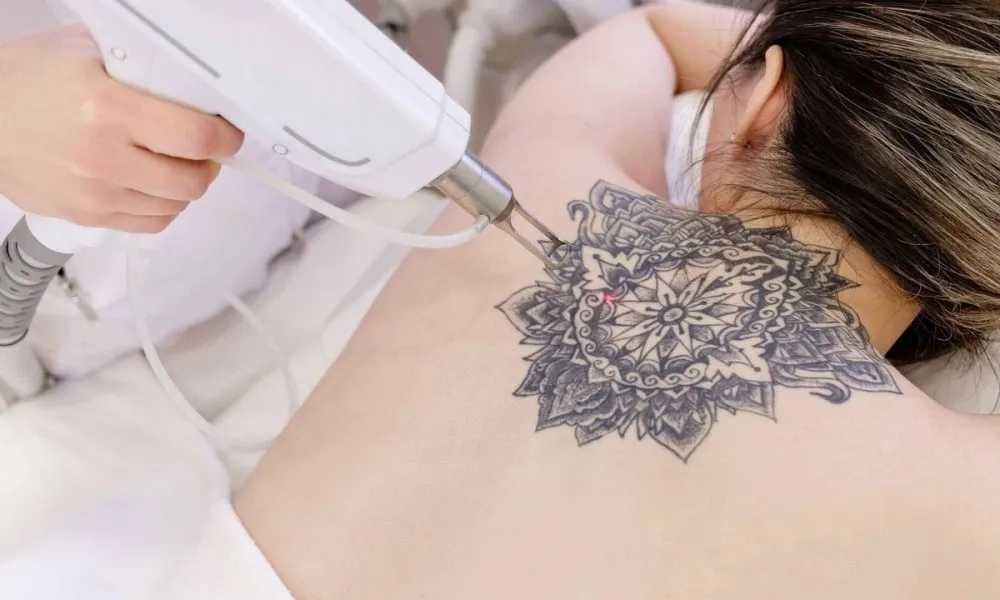Tattoo regret has fueled a growing industry of removal options, with various methods promising to fade or eliminate unwanted ink. The popularity of tattoos continues to grow, and so does interest in removal techniques for those who change their hearts. Comparing different approaches helps individuals make informed decisions aligned with their expectations, budgets, and timelines.
- Professional laser tattoo removal
With laser tattoo removal, specific wavelengths of light target ink particles while minimizing damage to nearby skin. This approach delivers intense pulses that fragment ink into tiny particles, which the body’s lymphatic system gradually eliminates. Key advantages of laser removal include:
- Ability to target specific ink colours with different wavelengths
- Established safety profile with decades of clinical research
- Predictable results with consistent fading across sessions
- Minimal scarring when performed by qualified professionals
- Ability to altogether remove tattoos in many cases
Despite these benefits, laser removal has notable limitations, including significant cost, discomfort during treatment, and the requirement for multiple sessions spaced weeks apart. Complete removal typically requires 5-12 sessions, depending on factors like ink type, tattoo age, and individual health characteristics. If you need additional details, check neatcellpen.com.
- Surgical excision approaches
For certain small tattoos, surgical excision provides an immediate removal option. This approach involves surgically cutting out the tattooed skin and either closing the wound directly or using skin grafts for larger areas. Surgical excision offers several benefits:
- Immediate and complete removal in a single procedure
- Effectiveness regardless of ink colour or type
- Defined timeline and cost compared to multi-session approaches
- Chemical removal methods
Various chemical methods attempt to remove tattoos by introducing substances that draw ink toward the skin’s surface. These typically involve the application of acids or other caustic substances that create controlled damage to lift pigment during the healing process. Chemical methods generally offer:
- Lower initial cost than laser treatments
- Availability outside medical settings
- Less sophisticated equipment requirements
These approaches come with substantial concerns, including unpredictable results, significant scarring risks, pain during and after application, and the potential for severe adverse reactions. Due to these safety concerns, most dermatologists and medical professionals are enormously cautious against chemical removal.

- Salabrasion and dermabrasion
These mechanical methods attempt to remove tattoos by physically abrading the skin layers containing ink. Salabrasion uses salt to create a scrubbing medium, while dermabrasion employs professional medical equipment to remove skin layers precisely. These approaches are practical for superficial ink but present considerable limitations:
- Significant pain during and after the procedure
- High risk of scarring and pigmentation changes
- Limited effectiveness for deeper ink deposits
- Unpredictable results depending on technique
While dermabrasion performed by dermatologists offers somewhat better outcomes than salabrasion, both methods have been superseded by laser technology for most situations.
Effectiveness comparison
When comparing removal methods objectively, several factors determine overall effectiveness:
- Complete removal potential – Laser treatments and surgical excision offer the highest probability of complete removal, while other methods typically achieve only partial fading.
- Predictability – Laser protocols offer the most consistent and predictable outcomes across different tattoo types, with results documented in numerous clinical studies.
- Versatility – Laser approaches address the broadest range of tattoo sizes, colours, and locations, while other methods have more significant limitations.
When considering any removal method, consulting with qualified medical professionals helps ensure safety and sets realistic expectations for the process and results.

